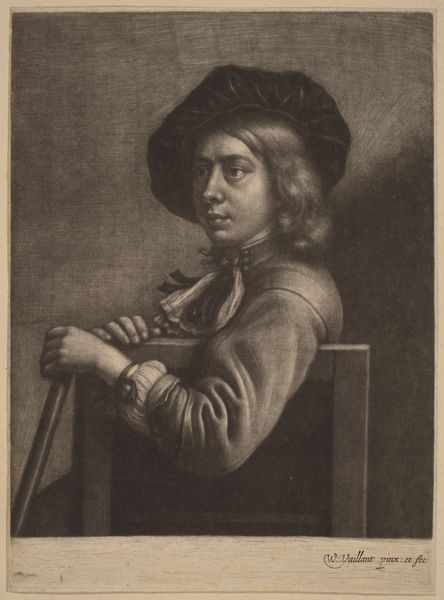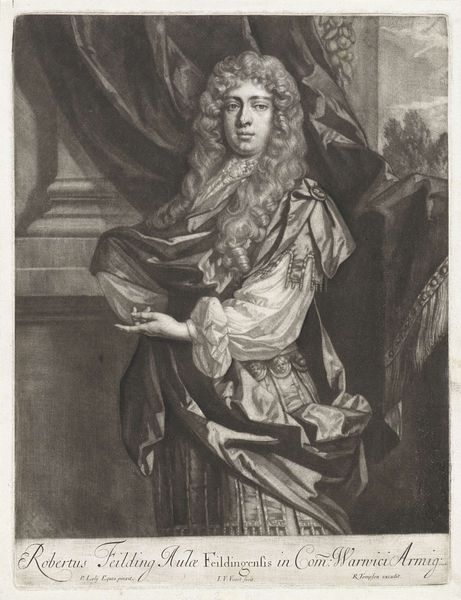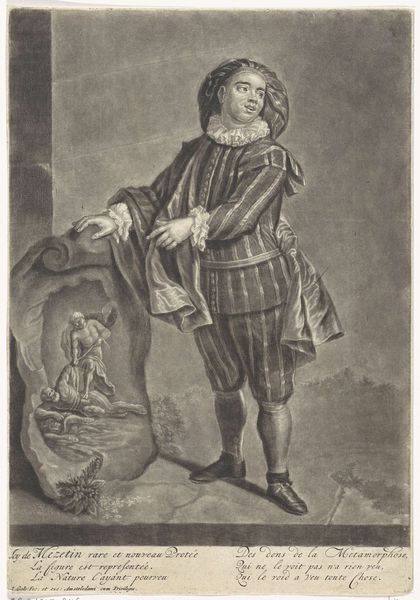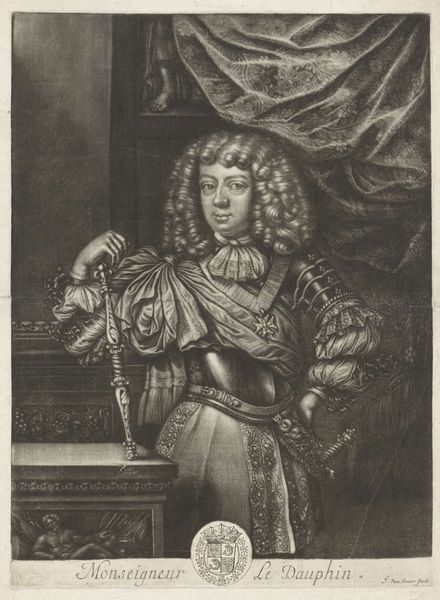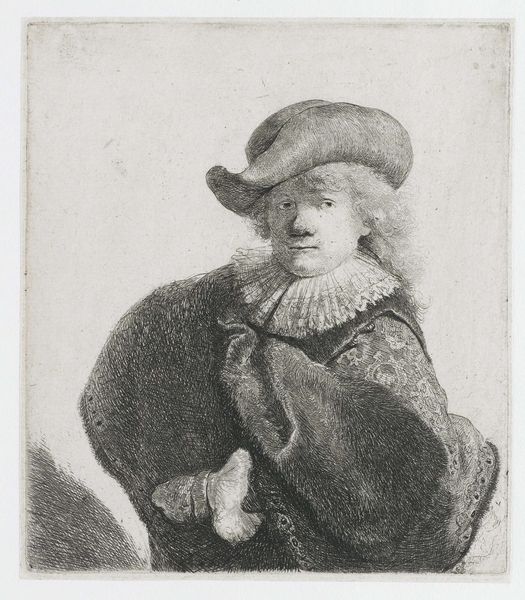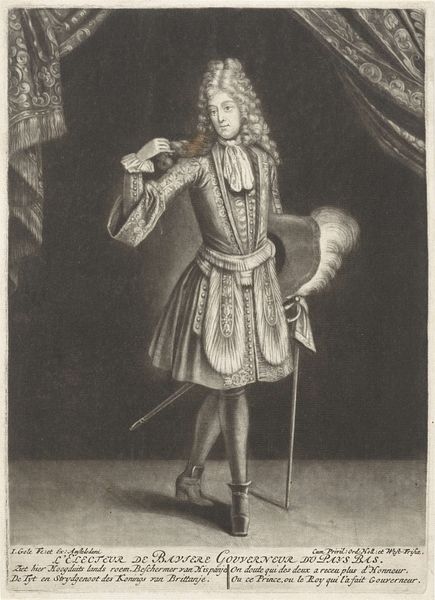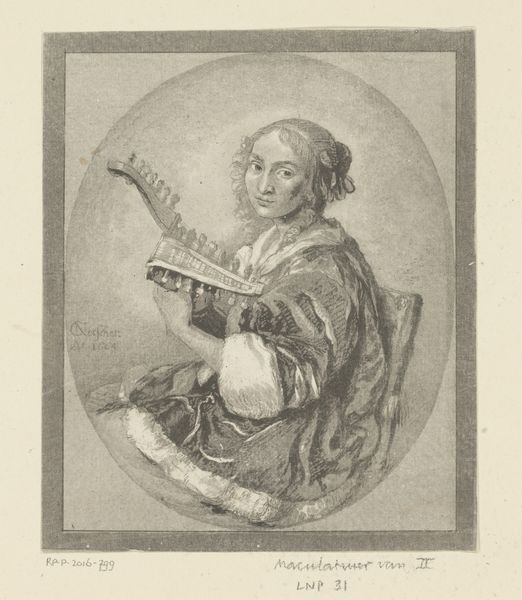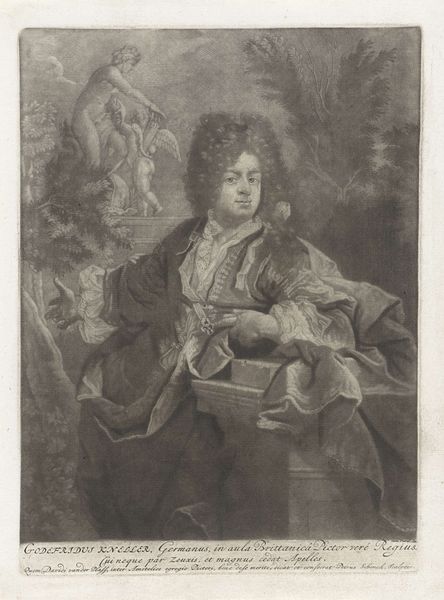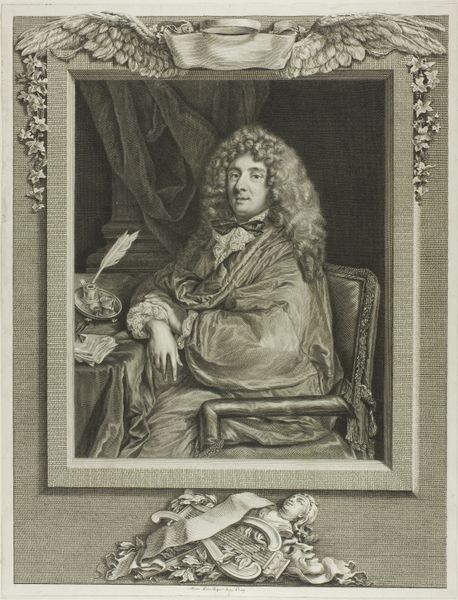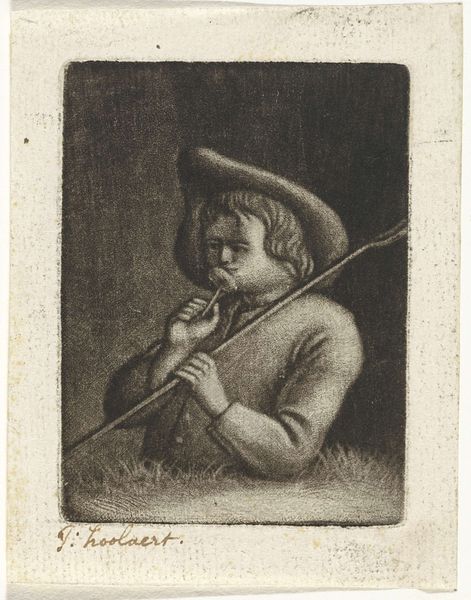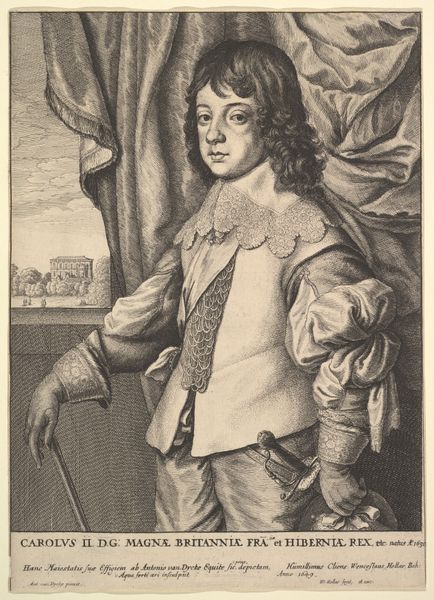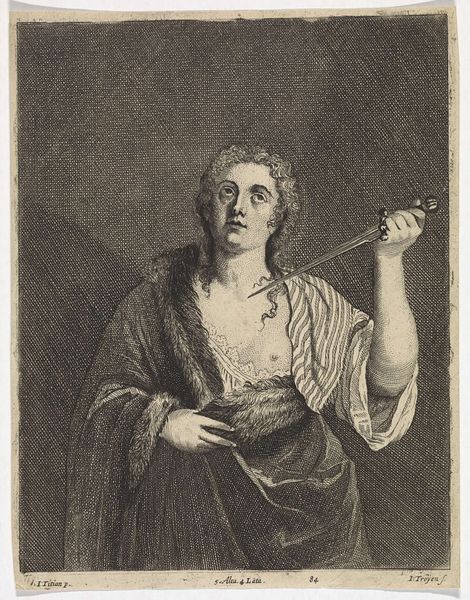
drawing, charcoal
#
portrait
#
drawing
#
dutch-golden-age
#
charcoal drawing
#
portrait drawing
#
genre-painting
#
charcoal
#
portrait art
Dimensions: height 278 mm, width 221 mm
Copyright: Rijks Museum: Open Domain
Curator: Up next, we have a captivating charcoal drawing titled "Jonge Jager," or "Young Hunter," by Wallerant Vaillant, dating roughly between 1658 and 1677. It is now part of the Rijksmuseum collection. Editor: The contrast is remarkable. The young man’s face is so softly rendered, and he is caught in the shadow. It adds to the somewhat melancholic mood of this portrait, especially considering the weight of what he’s carrying. Curator: Exactly, the subtle gradations in tone are achieved masterfully using charcoal. It gives the work a remarkable depth. Vaillant’s emphasis on tonal variation rather than distinct outlines creates a soft, almost dreamlike quality. I read it in connection to other genre paintings of that era, where the depiction of everyday figures in an idealized manner became very popular in the Dutch Golden Age. Editor: Yes, and the clothing helps identify his social class, and in my view that hat looks a little ridiculous—or, should I say, extravagant for someone supposed to be an active outdoorsman, like in a hunt, maybe is someone pretending? I wonder how the Dutch public at the time interpreted these portrayals. Curator: It's intriguing. The rabbit adds to that question. His pose is certainly calculated. However, consider that genre painting itself contributed to constructing ideas about masculinity and class in the public's mind. He carries the tool on his shoulders that probably served the rabbits he hunted that hang from there, what I call visual counterpoints within the composition. The stark lighting directs our gaze meticulously from the young man's gaze and attitude toward the animal itself. Editor: Certainly, there’s a statement being made about youth, hunting, social position, and mortality, subtly woven together through the figure, the charcoal texture and, to add another formal component, the overall value range is really close to the middle gray! And I imagine such artworks stimulated discussions about the roles and aspirations within Dutch society. Curator: An extremely thoughtful interpretation, I appreciate the cultural layering that can be unveiled through studying even what seems like a simple portrait. Editor: Agreed, and studying its formal qualities reveals the sophisticated intent that resonates through social history and art historical meaning.
Comments
No comments
Be the first to comment and join the conversation on the ultimate creative platform.
